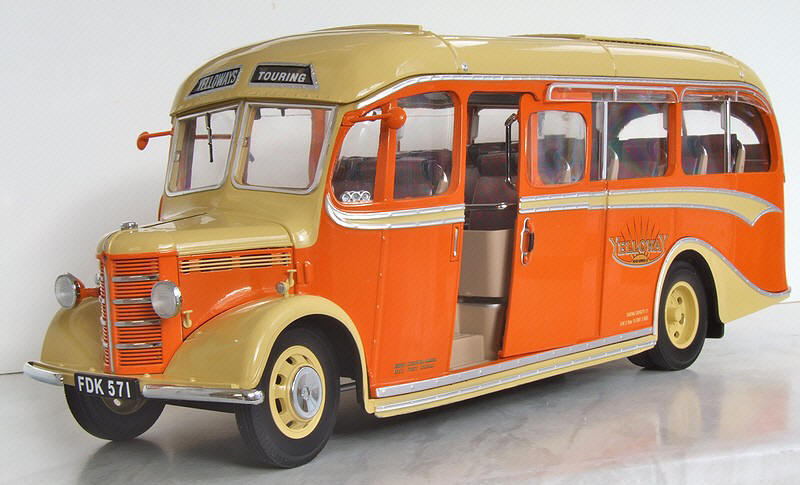
Sunstar 1:24 Bedford OB - Yelloways Coaches of Rochdale
Reg. FDK 571
Released August 2006
Review by Kevin Ellis
Following Andy McClelland's excellent
review of the Original Classics OB I thought it would be of interest to
provide a similar article covering the other 1/24th scale Bedford OB
coach produced by Sunstar.
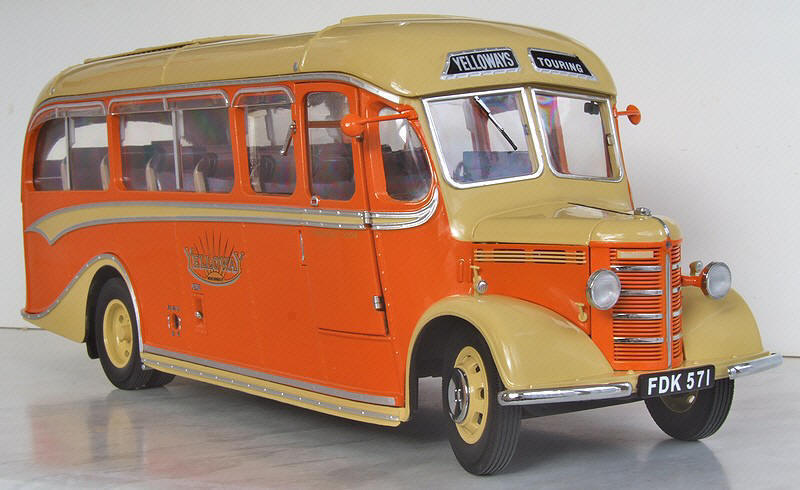 The
OB is Sunstar's second foray into the 1/24th scale bus market, it's
highly acclaimed Routemasters were the first UK mass produced model
The
OB is Sunstar's second foray into the 1/24th scale bus market, it's
highly acclaimed Routemasters were the first UK mass produced model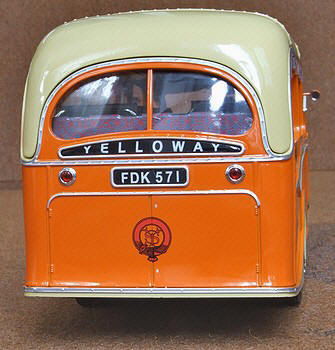 buses released in this larger super detailed scale. It would appear that
manufacturers believe there is a ready market for further models in this
scale, Gilbow followed Sunstar into this market with it's London DMS and
is set to expand its range in 2007 with a new MCW Metrobus model.
buses released in this larger super detailed scale. It would appear that
manufacturers believe there is a ready market for further models in this
scale, Gilbow followed Sunstar into this market with it's London DMS and
is set to expand its range in 2007 with a new MCW Metrobus model.
The Sunstar model I have is the first release that comes in the livery
of the well-known Rochdale operator Yelloways Motor Services, The model
depicts a 1947 Bedford OB which in this case is registered FDK 571,
interestingly this is the third time this particular coach has been
modelled with two previous versions being released by Corgi in it's
1/50th classics and 1/76th OOC model ranges. EFE also produced a similar
1/76th Yelloways OB back in 1996 bearing the registration HDK 542.
The model comes packaged in its very own dedicated box that has full
colour pictures of the model adorning it, opening the outer box reveals
the polystyrene foam packaging that securely retains the model, the only
other items included are a limited edition numbered certificate that
shows a run of 3,250 models and two plastic wing mirrors that push fit
into holes on the front of the model.
My first impressions upon seeing the model were extremely good. There's
certainly no doubt that Sunstar have captured the essence this iconic
vehicle well.
The model itself weighs in at almost 1.4kg and measures 312mm long x
97mm wide and 120mm high, the overall size is strangely quite a bit
bigger than the Original Classic example which seems slightly odd if
both are truly to 1/24th scale.
The main body shell is diecast, while the chassis, interior, radiator
and front mudguards are all plastic, apart from the chassis these parts
are all finished with a coat of the appropriate coloured paint.
Unlike Andy my only memories of the OB are from the preserved examples
I've seen at various rallies or books but the detailing on this model
would suggest it's based on the vehicle as it appeared in the late
1940's.
The level of detailing is particularly impressive, starting on the
outside the all important radiator grille has nicely scaled slates and
all the correct chromed inserts. The Bedford name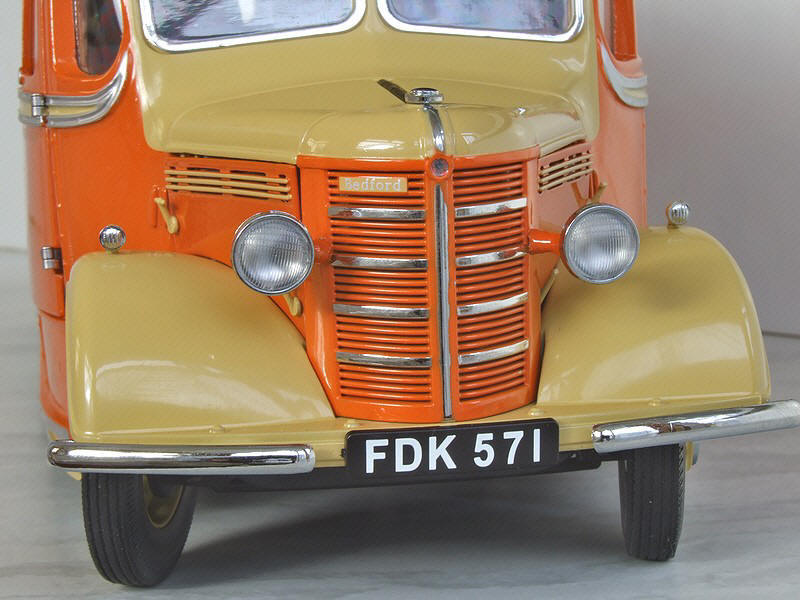 badge and a chromed filler cap complete the detailing. Headlamps have
painted rears and support arms with realistic textured plastic lenses
fitted to the front and held in place by chromed retaining rings.
badge and a chromed filler cap complete the detailing. Headlamps have
painted rears and support arms with realistic textured plastic lenses
fitted to the front and held in place by chromed retaining rings.
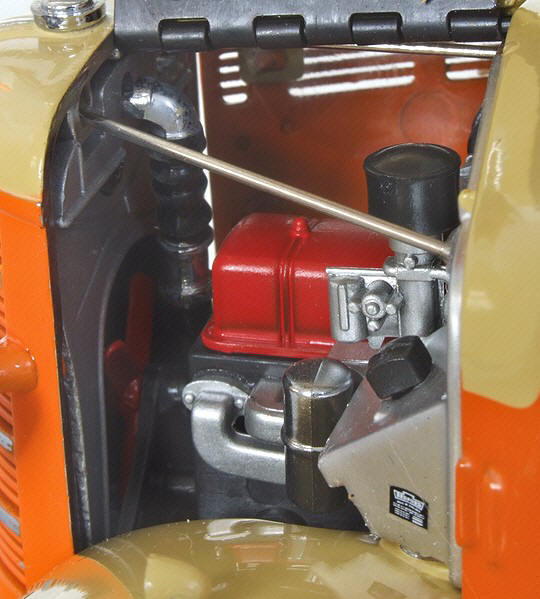 The
Sunstar model has opening bonnet covers which in turn have detachable
the side panels. Behind these can be found a fairly detailed engine that
includes the main engine block, radiator, fan and various cylinders and
pipe work. A nice touch are the tiny Bedford chassis plates that have
been reproduced on either side of the front bulkhead.
The
Sunstar model has opening bonnet covers which in turn have detachable
the side panels. Behind these can be found a fairly detailed engine that
includes the main engine block, radiator, fan and various cylinders and
pipe work. A nice touch are the tiny Bedford chassis plates that have
been reproduced on either side of the front bulkhead.
There are other opening features which like the Original Classics
version include the sunroof and passenger door which can both be slide
open. In my (rather hand fisted) case trying to open the rather tightly
fitting passenger door caused the inner door handle to drop off and two
of the side window visor fixing lugs to snap. Luckily, some small drops
of glue easily repaired the damage. In addition to these features the
drivers door also swings open on three tiny hinges providing excellent
views of the interior which I'll come on to later
Exterior chrome beading is mainly reproduced using silver paint however
chrome finished plastic components are used for the front hub caps,
bumpers, rear lights and various other small fittings. To be honest the
beading looks a little dull in comparison to the chromed items but it's
not really a major issue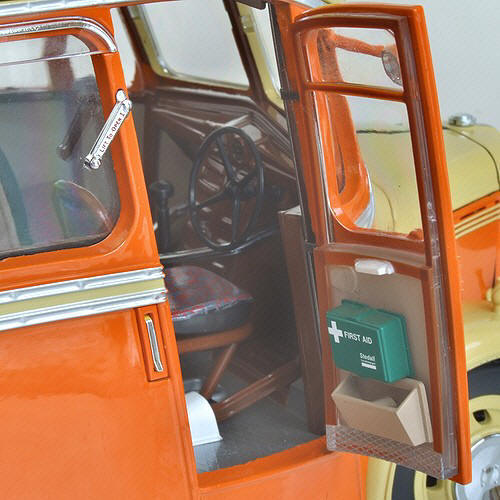 and its difficult to see how else these features could have been
reproduced.
and its difficult to see how else these features could have been
reproduced.
Two small details I only spotted after photographing the model were the
tiny side trafficators that can actually be popped out and the fact that
the licence disk holders actually contain miniature printed disks!
Poseable front wheels are fitted which I'm happy to report don't show
any sign of the sagging that is often found on some of the smaller scale
models. The various destination blinds and the rear registration plate
are printed on the rear of clear plastic producing a glazed effect but
this doesn't look as convincing as those found on the Original Classic'
version which appear to be properly set back behind the glazing.
The main side window glazing is positioned behind the casting which
although correct is somewhat out of scale due to the thickness of the
actual metal. This is particularly noticeable around the front most side
windows which on the real coach would have been virtually flush with the
outside bodywork.
Clear plastic visors are fitted above the side windows and as mentioned
earlier these are very prone to damage. It's certainly advisable to
avoid these when lifting this substantial model.
The real delight of this model is to be found on the interior and the
level of detail seems to go beyond that found on the Routemaster. The
ceiling is finished with a patterned design and hanging from it are the
luggage racks and interior lights. At the front an interior mirror and a
clock showing five past ten have been attached to the front dome panels.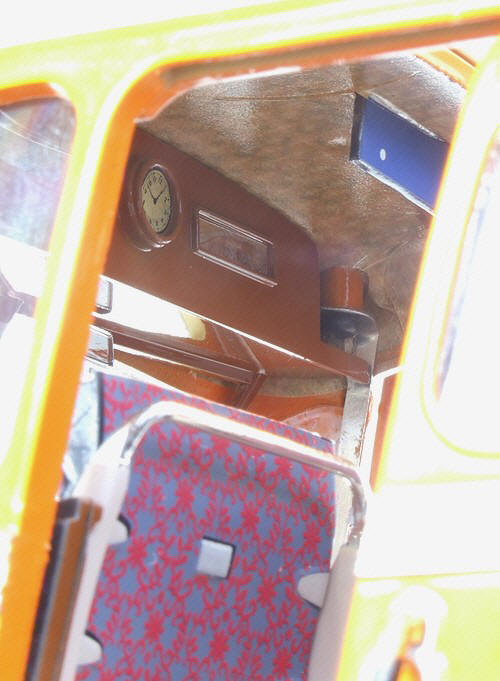
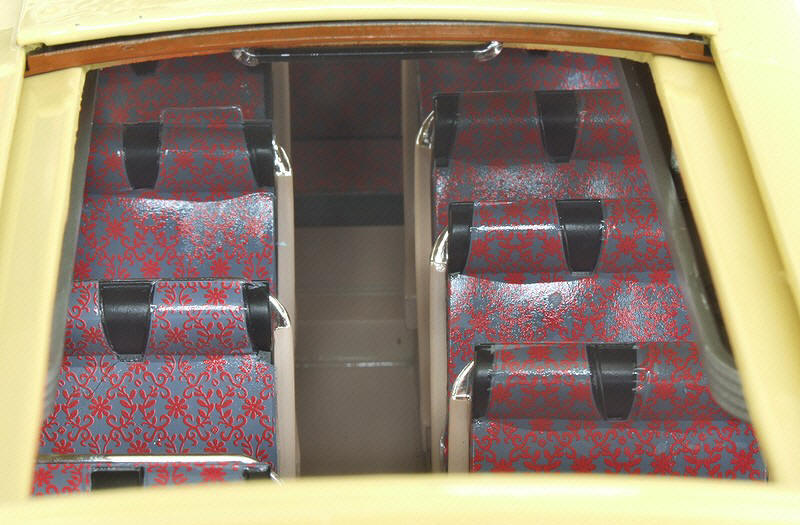 Each
individual seat has a full tubular frame and light brown side panels,
the cushions are tampo printed with a suitable blue and red period
looking motif although the later is somewhat spoilt by semi-gloss finish
that really doesn't give an authentic impression of a cloth material.
The tops of seats have headrests and are finished off at the rear with a
chromed grab rail. The rear of the seats include a reproduction of the
retaining brackets and a small central mounted ashtray. Window winding
handles are provided below some of the side windows on both sides of the
model.
Each
individual seat has a full tubular frame and light brown side panels,
the cushions are tampo printed with a suitable blue and red period
looking motif although the later is somewhat spoilt by semi-gloss finish
that really doesn't give an authentic impression of a cloth material.
The tops of seats have headrests and are finished off at the rear with a
chromed grab rail. The rear of the seats include a reproduction of the
retaining brackets and a small central mounted ashtray. Window winding
handles are provided below some of the side windows on both sides of the
model.
The driver's area and dashboard have the highest detailing with all the
dials and switches nicely reproduced. The handbrake, gear stick and
pedals together with a nicely scaled steering wheel surround the
driver's seat. A small fire extinguisher is moulded into panel beside
the driver's door on to which is fixed a first aid box.
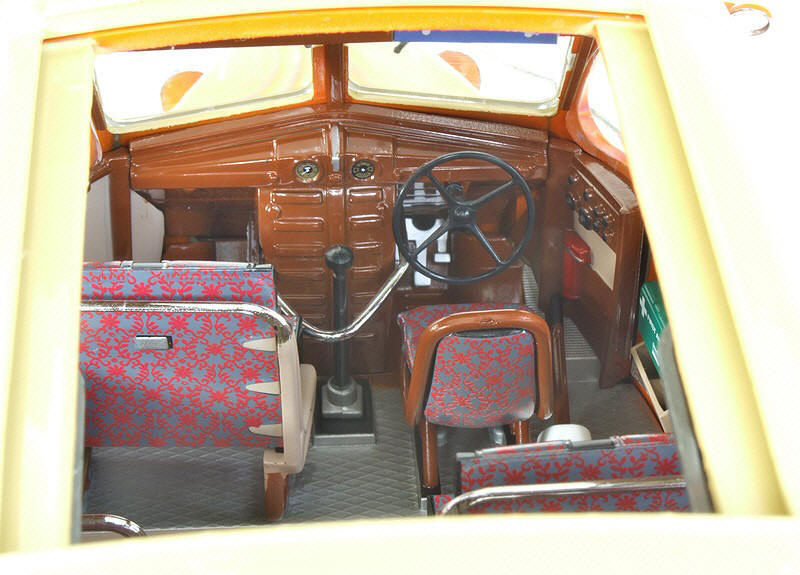 The
floor is painted with light brown matt paint while the panel beading on
this and driver's floor area are finished with silver paint.
The
floor is painted with light brown matt paint while the panel beading on
this and driver's floor area are finished with silver paint.
The base of the model is fairly sparse with just the underside of the
engine, a fuel tank. A separate silver exhaust pipe and black prop shaft
run from the engine to the rear where a detailed rear axle is fitted.
The twin rear tyres do seem to have a rather large gap separating them
and look a bit on the narrow side to me but I've not been able to find
any photographic evidence that can confirm whether these are accurate or
not.
You certainly get an awful lot of model for the money but are there any
bad points you may ask, well yes there a few small ones, the window
visors are very fragile and vulnerable to damage particularly around the
passenger door.
The yellow paint on the roof looks rather thickly applied and some
slight unevenness is visible as a result on my example, this a shame as
the orange paint looks perfect as does the tempo printing which is well
executed and fully legible.
The side engine covers do tend to come adrift rather easily once the
protective plastic transit stickers have been removed so I'd advise
leaving the ones on the inside of the engine covers in place.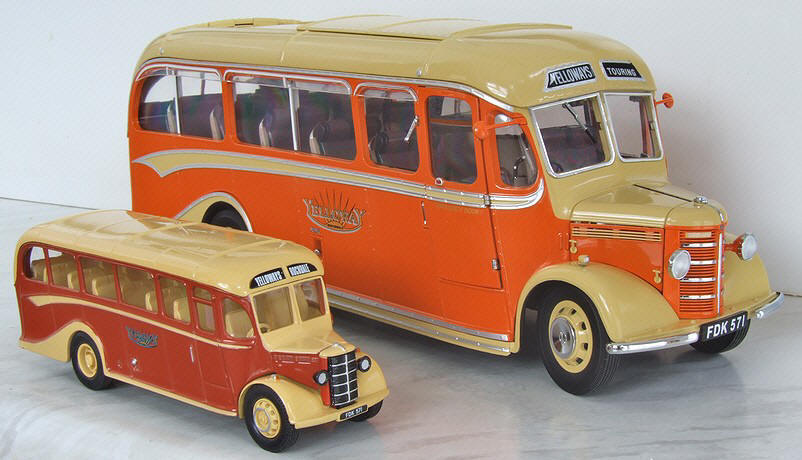
Having dug out my original Corgi 1/50th example I'm left wondering which
if either model has the right shade of orange paint applied, the
difference between the two is marked to say the very least!
The opening features all seem to fit well although the passenger door
doesn't slide very easily on my example however on the plus side at
least there's no evidence of any unsightly gaps when these features are
closed.
Would I buy any more, well to be honest I'd love to have them all but
space and the little matter of the £80 RRP probably means unless a model
with a very strong local connection comes along I'll have to resist the
temptation and make do with just the one.
Three further liveries have already been announced and it seems likely
more will be announced for 2007, it's understood that Sunstar also plans
to produced some of the later Duple body variations in the future.
As to which of the two 1/24th OB's is the best I'll leave that up to you
to decide, the Original Classic version has fewer opening features but
the added attraction of working lights. All I can say is I'm well
pleased with Sunstar's efforts.
KRE
The opinions offered in the reviews on this page remain those of the author, and do not necessarily represent the of views of The Model Bus Website.